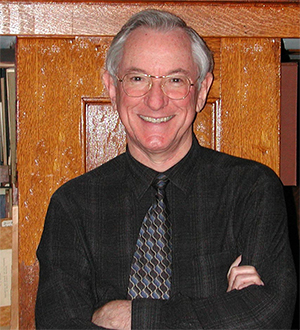by Kim Martineau, Lamont-Doherty Earth Observatory
 A geophysicist from Columbia University’s Lamont-Doherty Earth Observatory in Palisades, NY will receive the National Medal of Science on Thursday, Nov 20 at the White House. Sean Solomon, director of Columbia University’s Lamont-Doherty Earth Observatory and principal investigator of NASA’s mission to Mercury, will be awarded the nation’s top scientific honor.
A geophysicist from Columbia University’s Lamont-Doherty Earth Observatory in Palisades, NY will receive the National Medal of Science on Thursday, Nov 20 at the White House. Sean Solomon, director of Columbia University’s Lamont-Doherty Earth Observatory and principal investigator of NASA’s mission to Mercury, will be awarded the nation’s top scientific honor.
“These scholars and innovators have expanded our understanding of the world, made invaluable contributions to their fields, and helped improve countless lives,” said President Obama. “Our nation has been enriched by their achievements, and by all the scientists and technologists across America dedicated to discovery, inquiry, and invention.”
As head of NASA’s MESSENGER mission to Mercury, Solomon has led the most comprehensive investigation yet of the closest planet to the Sun. Some of his other projects are household names in space science: the Magellan mission to Venus, the Mars Global Surveyor mission and the GRAIL mission to the Moon, which launched in 2011 and has mapped the Moon’s gravitational field in unprecedented detail.
After nearly seven years traveling through space, the MESSENGER probe entered Mercury’s orbit in 2011 and has been continuously mapping the planet’s interior, surface and atmosphere. Recent discoveries include ice in Mercury’s northern craters and an iron-rich core that is proportionally much larger than Earth’s. The probe will continue gathering data about the planet before it crash lands on Mercury at the end of March next year.
Mercury’s craters may hold as much as a trillion tons of ice, according to data gathered by NASA’s MESSENGER mission.
Solomon became director of Lamont-Doherty in 2012 after serving for nearly two decades as director of the Carnegie Institution’s Department of Terrestrial Magnetism in Washington, D.C. After finishing his Ph.D. in geophysics at Massachusetts Institute of Technology in 1971, he stayed on to teach and conduct research there for two decades. In 1978, he published a paper in the journal Geophysical Research Letters that explained how relatively small bodies like the moon and Mercury evolved without the multiple tectonic plates found on Earth. This “one-plate planet” idea still holds in understanding the tectonics of the solar system’s rocky inner planets.
At MIT, Solomon ran one of the earliest ocean-bottom seismometer labs. He investigated earth’s mid-ocean ridges by leaving those instruments at the bottom of the Atlantic, Pacific and Indian oceans to record earthquakes on the seafloor and measure earth’s structure below. As a result, he made important contributions to understanding how earth’s multiple plates generate new crust below the sea, where most plates intersect. He moved to Carnegie in 1992. Among other roles, he served as principal investigator for Carnegie’s part of the NASA Astrobiology Institute, which seeks to understand the origin of life on earth, and its potential to exist elsewhere.
Solomon is a member of the National Academy of Sciences and the American Academy of Arts and Sciences and has received numerous other awards, among them the Geological Society of America’s G. K. Gilbert Award and American Geophysical Union’s Harry H. Hess Medal. When he stepped down as a director at Carnegie in 2011, colleagues arranged to have a previously discovered asteroid named after him. Asteroid 25137 Seansolomon, about a mile and half wide, is currently orbiting the sun between Mars and Jupiter.
Solomon is the third Lamont-Doherty scientist to receive the medal; Lamont’s founding director Maurice Ewing and pioneering climate scientist Wallace Broecker received medals in 1973 and 1996 respectively.
The National Medal of Science was created in 1959 and is administered for the White House by the National Science Foundation. Awarded annually, it recognizes individuals who have made outstanding contributions to science and engineering. The President receives nominations from a committee of presidential appointees based on their contributions to chemistry, engineering, computing, mathematics, and the biological, behavioral/social, and physical sciences.
Kim Martineau is a Science Writer at the Lamont-Doherty Earth Observatory in Palisades, NY.
See also: Faculty Q&A: Sean Solomon on Lamont-Doherty, Earth Science and Space, news.columbia.edu 10/30/201








